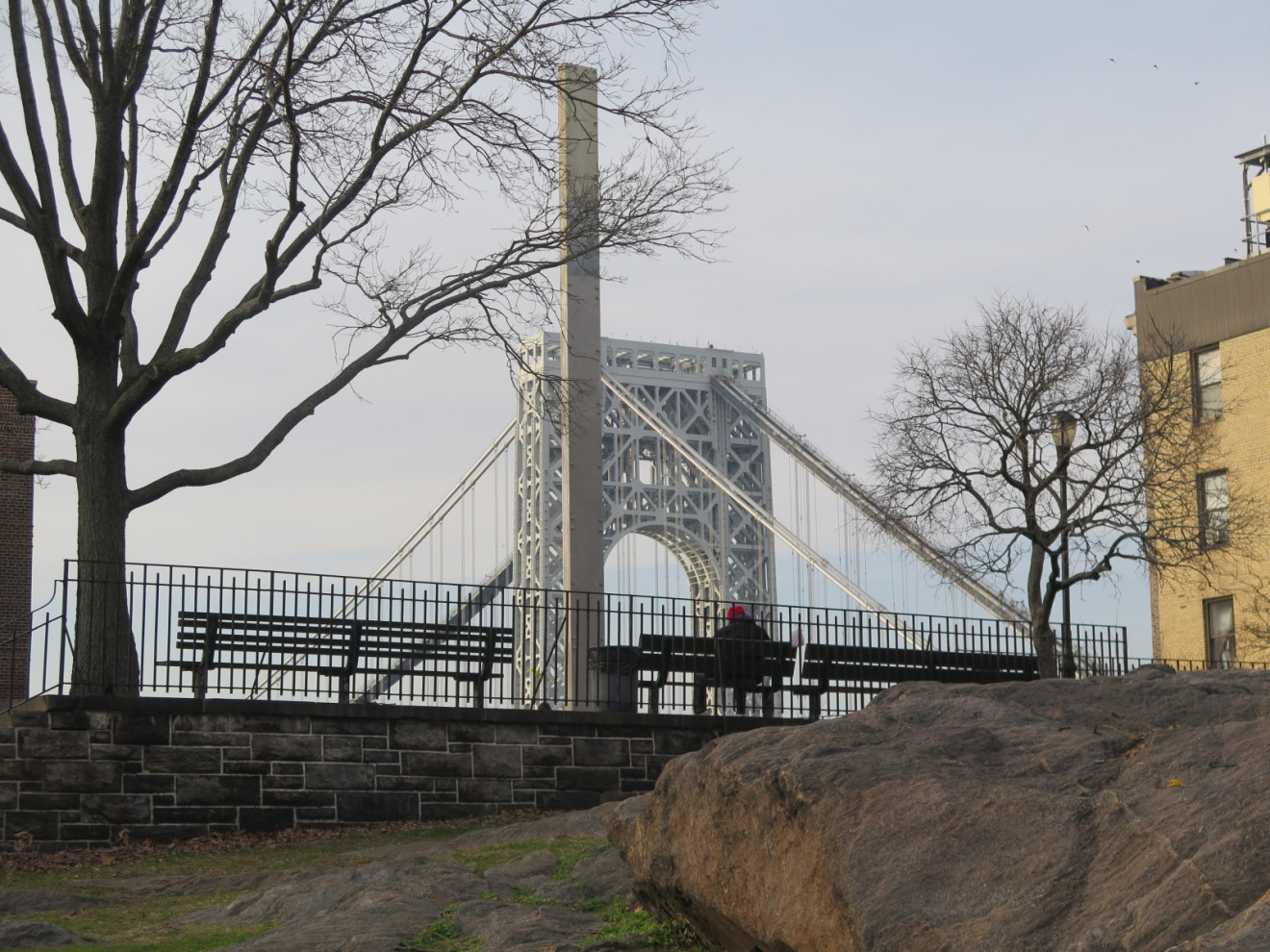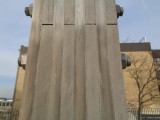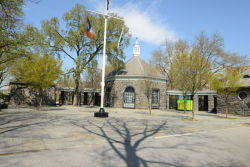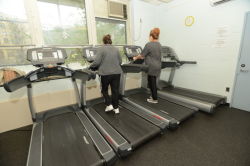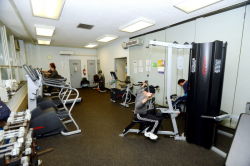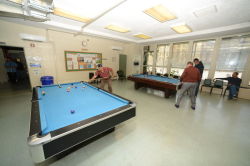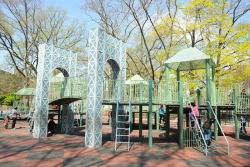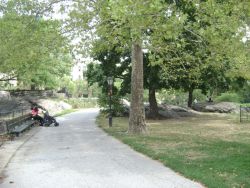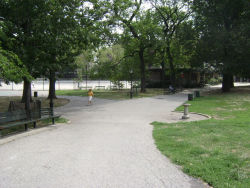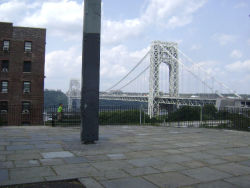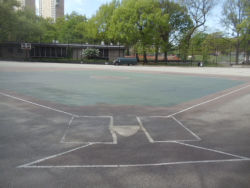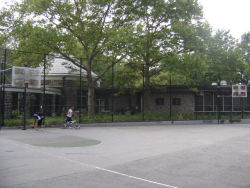J. Hood Wright Park
View all monuments in NYC Parks, as well as temporary public art installations on our NYC Public Art Map and Guide.
3000 A.D. Diffusion Piece
| Artist: | Tery Fugate-Wilcox |
| Dedicated: | 1974 |
| Location: | Haven Avenue between West 173rd Street and West 176th Street |
Artwork History
What is this artwork?
Dedicated in 1974, 3000 A.D. Diffusion Piece is a conceptual artwork commissioned through a juried program begun by the Public Arts Council, a special committee established by the Municipal Art Society in the early 1970s. The program strived to involve New York neighborhoods in selecting and installing public sculptures, and it commissioned more than a half dozen artworks.
Emerging from an elevated terrace set on a large natural rock outcropping, the 5,100-pound abstract piece by sculptor Tery Fugate-Wilcox (born 1944) is built out of bolted plates of magnesium and aluminum. Over time, the layers will fuse with each other—Fugate-Wilcox estimated by the year 3000—at which point the piece will be “completed.” Stretching 36 feet into the air, 3000 A.D. Diffusion Piece complements the George Washington Bridge stanchions that rise in the west background behind the piece.
The artist’s interest in diffusion was inspired by a film he saw on plate tectonics, causing the artist to audit courses on diffusion at several colleges. Other diffusion pieces by Fugate-Wilcox may be found at the Dennos Museum Center in Traverse City, at Northwestern Michigan College, the Guggenheim Museum, The Wadsworth Atheneum Museum of Art, and the National Gallery of Art in Australia.
Who made it?
Tery Fugate-Wilcox was born in Kalamazoo, Michigan. He moved to New York City in 1968 and lived and worked in Tribeca for nearly five decades. His wife and frequent collaborator was performance provocateur Valerie Shakespeare. As of 2022 he resided in Hudson, New York, and was part of the town’s vibrant arts scene.
Fugate-Wilcox has consistently pushed the boundaries of what defines art and often works in a conceptual manner, exploring issues of materiality, absence, and the ephemeral effects of environmental change. He is associated with a movement known as “Actual Art,” in which the artists “consider the future of the work to be as important as its present, relinquishing control over the work to nature.”
He exhibited sculpture and painting at 112 Greene Street (1972) and was represented by James Yu Gallery (1972-74) and Louis K. Meisel Gallery (1974-82) in SoHo. From 1993 to 2002 he showed work at the Fulcrum Gallery. Wryly subversive, Fugate-Wilcox even “created” a non-existent gallery, Jean Freeman, using this hoax as a socio-artistic act.
3000 A.D. Diffusion Piece was the artist’s first permanent public commission, though much of his work has been transitory. In 1971 Fugate-Wilcox made Mace Missiles, part of a temporary group art exhibition in the Battery. Weathering Wall (1979), made of layers of paints on plywood panels and located on a parking garage at 111 Varick Street facing the Holland Tunnel entrance, lasted for a decade. City Wall (1981) consisted of twenty-seven bars of brass, bronze, copper, iron, and steel arranged horizontally in 8 rows, embedded directly into the building’s exterior wall at 292 Lafayette Street.
Inserted in a wedge-shaped building cavity on 7th Avenue near Waverly Place, the artist's Weathering Concrete Triangle was a slanted equilateral sculpture made of cement mixed with filings of brass, copper, iron, steel, and bronze imbedded in a weeping willow pattern. As the sculpture was exposed to rain, the metals were meant to change colors. In response to community concerns, it was removed on the grounds that it was in violation of building code and local landmark protections.
Artwork Details
| Description: | Monolith of eight magnesium and aluminum plates with steel bolts set on steel base set in concrete pad with plaque |
| Materials: | Magnesium, aluminum, steel, concrete |
| Dimensions: | H: 35' W: 3' D: 1' |
| Donor: | Public Arts Council and Neighborhood Action Council |
Inscription
3000 A. D. BY TERRY FUGATE-WILCOX / THE ALUMINUM & MAGNESIUM WILL MIX TOGETHER BY 3000 A.DPlease note, the NAME field includes a primary designation as well as alternate namingsoften in common or popular usage. The DEDICATED field refers to the most recent dedication, most often, butnot necessarily the original dedication date. If the monument did not have a formal dedication, the yearlisted reflects the date of installation.
For more information, please contact Art & Antiquities at (212) 360-8163.
Check out your park's Vital Signs
Clean & Safe
Green & Resilient
Empowered & Engaged Users
Share your feedback or learn more about how this park is part of a
Vital Park System
